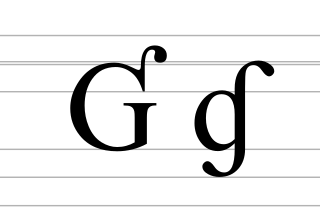
È, è (e-grave) is a letter of the Latin alphabet. In English, è is formed with an addition of a grave accent onto the letter E and is sometimes used in the past tense or past participle forms of verbs in poetic texts to indicate that the final syllable should be pronounced separately. For example, blessèd would indicate the pronunciation BLESS-id rather than BLEST. It also occurs in loanwords such as Italian caffè.

Í, í (i-acute) is a letter in the Faroese, Hungarian, Icelandic, Karakalpak, Czech, and Slovak languages, where it often indicates a long /i/ vowel. This form also appears in Catalan, Irish, Italian, Occitan, Portuguese, Spanish, Aragonese, Galician, Leonese, Navajo, and Vietnamese language as a variant of the letter "i". In Latin, the long i ⟨ꟾ⟩ is used instead of ⟨í⟩ for a long i-vowel.

Ú, ú (u-acute) is a Latin letter used in the Czech, Faroese, Hungarian, Icelandic, Karakalpak and Slovak writing systems. This letter also appears in Dutch, Frisian, Irish, Occitan, Catalan, Pinyin, Portuguese, Spanish, Italian, Galician, and Vietnamese as a variant of the letter "U".

Ĝ or ĝ is a consonant in Esperanto orthography, representing a voiced postalveolar affricate, and is equivalent to a voiced postalveolar affricate or a voiced retroflex affricate.

Ś is a letter of the Latin alphabet, formed from S with the addition of an acute accent. It is used in Polish and Montenegrin alphabets, and in certain other languages or romanizations.

G with hook is a letter of the extended Latin alphabet. In the International Phonetic Alphabet, its small caps form represents the voiced uvular implosive and its lowercase form represents the voiced velar implosive. Because it occurs in the orthographies of some African languages, including some unofficial orthographies of Fula, it is included in the African reference alphabet.

U with bar or barred u is a letter of the Latin alphabet, formed from U with the addition of a bar.

Ṡ is a letter of the extended Latin alphabet, formed by S with the addition of a dot above.

Ṣ is a letter of the Latin alphabet, formed from an S with the addition of a dot below the letter. Its uses include:

Ḍ is a letter of the Latin alphabet, formed from D with the addition of a dot diacritic.

, ᶑ is a letter of the Latin alphabet, used in phonetic transcription to represent a voiced retroflex implosive, though it is not explicitly part of the International Phonetic Alphabet. It is formed from d with the addition of a hook to mark it as implosive, and a tail to mark it as retroflex. It is thus a fusion of ⟨ɗ ⟩ and ⟨ɖ ⟩.

ʮ (turned h with fishhook) is a symbol from extensions to IPA for apical dental rounded syllabic alveolar fricative. That is, it is the "z" sound in English pronounced with rounded lips, and treated as a vowel in a syllable. It is used by Sinologists when transcribing words from various languages. The standard IPA notation would be [z̩ʷ]. See Obsolete and nonstandard symbols in the International Phonetic Alphabet for more information.

Ḫ, ḫ is a Latin letter used to transliterate:

Che with vertical stroke is a letter of the Cyrillic script. Its form is derived from the Cyrillic letter Che.

Ṛ is a letter of the Latin alphabet, formed from R with the addition of a dot below the letter. It is used in the transliteration of Afro-Asiatic languages to represent an "emphatic r". It is used in transliterating Indo-Aryan and East Iranian languages to represent either syllabic r or a retroflex flap.

Ṭ is a letter of the Latin alphabet, formed from T with the addition of a dot below the letter.

Komi De is a letter of the Molodtsov alphabet, a version of Cyrillic. It was used only in the writing of the Komi language in the 1920s.

The letter Ƥ, called P with hook, is a letter of the Latin alphabet based on the letter p. It is used in some alphabets of African languages such as Serer.

Komi Sje is a letter of the Molodtsov alphabet, a version of the Cyrillic alphabet that was used to write the Komi language in the 1920s. It represented the voiceless alveolo-palatal sibilant.

Hwe is a letter of the Cyrillic script. Its form was derived from the Cyrillic letter Shha by adding a hook to the top of the left leg.




















